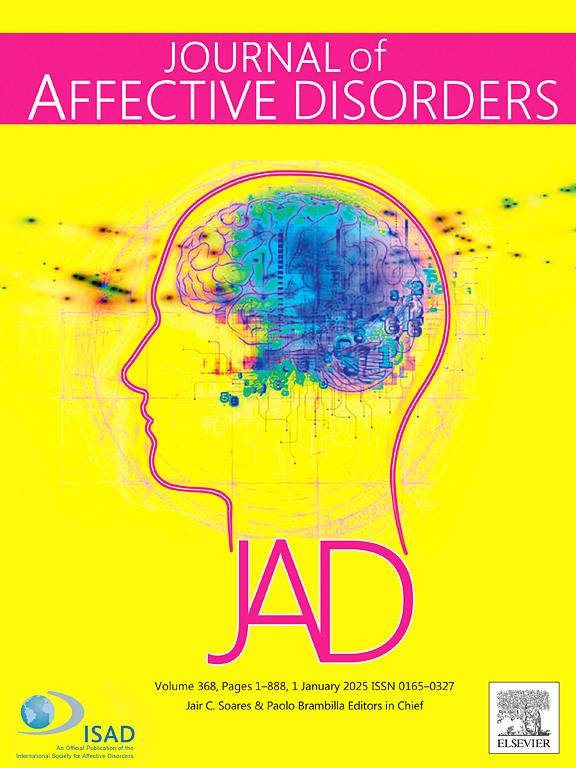Evaluating psychometric validity of ecological momentary assessment for youth irritability
IF 4.9
2区 医学
Q1 CLINICAL NEUROLOGY
引用次数: 0
Abstract
Background
Irritability is a transdiagnostic symptom in youth, leading to long-term adverse consequences. Ecological momentary assessment (EMA), or naturalistic clinical phenotyping, can quantify real-world experiences and affective dynamics of irritability in vivo and may be less contaminated by biases that impact retrospective report measures. However, to date, no research examines the psychometric properties of EMA measures of irritability.
Methods
The current study assesses EMA data from N = 49 youth receiving treatment for clinically impairing irritability (Mage = 10.63, 36.73 % female). Analyses evaluate two irritability EMA items and one positive-affect EMA item for within and between person variability, internal consistency, test-retest reliability, and convergent and discriminant validity.
Results
EMA items demonstrate acceptable psychometric properties including acceptable variability, consistency, reliability, and convergent and discriminant validity. Comparisons to previous work in anxious and healthy youth are discussed.
Limitations
Study limitations include participants' concurrent involvement in treatment and exclusion of outburst-related EMA measures from study analyses.
Conclusion
These results may facilitate future research with irritability EMA items in clinical populations; future work should validate EMA items psychometrically before use in clinical trials.
评价青少年易怒性生态瞬间评价的心理测量效度。
背景:易怒是青少年的一种跨诊断症状,可导致长期不良后果。生态瞬时评估(EMA),或自然临床表型,可以量化现实世界的经验和体内易怒的情感动态,并且可能较少受到影响回顾性报告测量的偏见的污染。然而,到目前为止,还没有研究检验EMA测量易怒的心理测量特性。方法:本研究评估了N = 49名接受临床减损性易怒治疗的青年的EMA数据(男性 = 10.63,女性36.73 %)。分析评估了两个易怒性EMA项目和一个积极影响性EMA项目的内部和人际变异性、内部一致性、重测信度、收敛效度和判别效度。结果:EMA项目表现出可接受的心理测量特性,包括可接受的变异性、一致性、信度、收敛效度和判别效度。比较以往的工作焦虑和健康的青年进行了讨论。局限性:研究的局限性包括参与者同时参与治疗和从研究分析中排除与爆发相关的EMA措施。结论:本研究结果可为今后在临床人群中开展过敏性EMA项目的研究提供参考;未来的工作应该在用于临床试验之前对EMA项目进行心理测量学验证。
本文章由计算机程序翻译,如有差异,请以英文原文为准。
求助全文
约1分钟内获得全文
求助全文
来源期刊

Journal of affective disorders
医学-精神病学
CiteScore
10.90
自引率
6.10%
发文量
1319
审稿时长
9.3 weeks
期刊介绍:
The Journal of Affective Disorders publishes papers concerned with affective disorders in the widest sense: depression, mania, mood spectrum, emotions and personality, anxiety and stress. It is interdisciplinary and aims to bring together different approaches for a diverse readership. Top quality papers will be accepted dealing with any aspect of affective disorders, including neuroimaging, cognitive neurosciences, genetics, molecular biology, experimental and clinical neurosciences, pharmacology, neuroimmunoendocrinology, intervention and treatment trials.
 求助内容:
求助内容: 应助结果提醒方式:
应助结果提醒方式:


